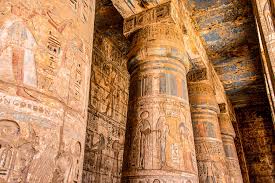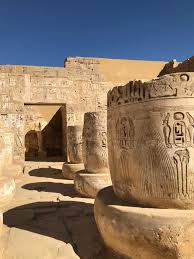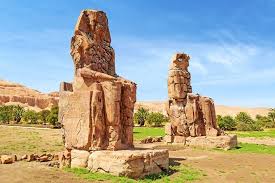Introduction to the Temple of Medinet Habu
The Temple of Medinet Habu, located in Luxor, is an ancient Egyptian temple built by Pharaoh Ramesses III to honor the god Amun. In my opinion, Habu City boasts one of the finest temples on the West Bank, and it can be easily combined with other nearby attractions in Egypt, such as the Valley of the Queens or the Temple of Hatshepsut.
This travel guide will provide detailed instructions on how to get there and all the information you need to know before departing!

Facts and History
The Temple of Medinet Habu (also spelled Madinat Habu) was constructed during the New Kingdom period of Egypt as a funerary temple (tomb) for Ramesses III, the last great pharaoh of Egypt.
The reliefs on the temple walls depict the dramatic victories of the Egyptian army against the Sea Peoples. During the early reign of Ramesses III, the Sea Peoples attempted to invade Egypt by land and sea but were defeated by him.
Excavations at the site of the Temple of Medinet Habu began between 1859 and 1899, and the most recent excavation work started in 1924 and has continued to the present day.

What to Expect – The Temple of Medinet Habu
Medinet Habu is a place worth exploring, with significantly fewer tourists than other Luxor temples like Hatshepsut's, despite potentially deserving an equal number of visitors.
Both the interior and exterior are adorned with incredible hieroglyphic carvings. Don't forget to look up! The artwork here is among the most striking and colorful you'll find in Egypt.
Today, the famous reliefs of the Sea Peoples' invasion can still be seen on the north outer wall. Often overlooked by large crowds of tourists, the interior of Medinet Habu is astonishing, and I believe it is one of the most worthwhile sites to see near Luxor.
As part of a day trip to the West Bank, Medinet Habu can be easily visited along with the Colossi of Memnon, the Temple of Hatshepsut, the Valley of the Queens, and other attractions.

Hieroglyphics on the Columns of Egyptian Temples
The columns of Egyptian temples are adorned with hieroglyphics, which are ancient Egyptian symbols used for writing. These hieroglyphics provide invaluable insights into the culture, religion, and history of ancient Egypt.
Opening Hours and Ticket Information
Opening Hours: 6:00 AM to 5:00 PM
Entrance Fee: *100 Egyptian Pounds (approx. $6 USD)
Students: 50 Egyptian Pounds with valid ID
*If you have purchased the Luxor Pass, this temple is included in the pass.
发表评论